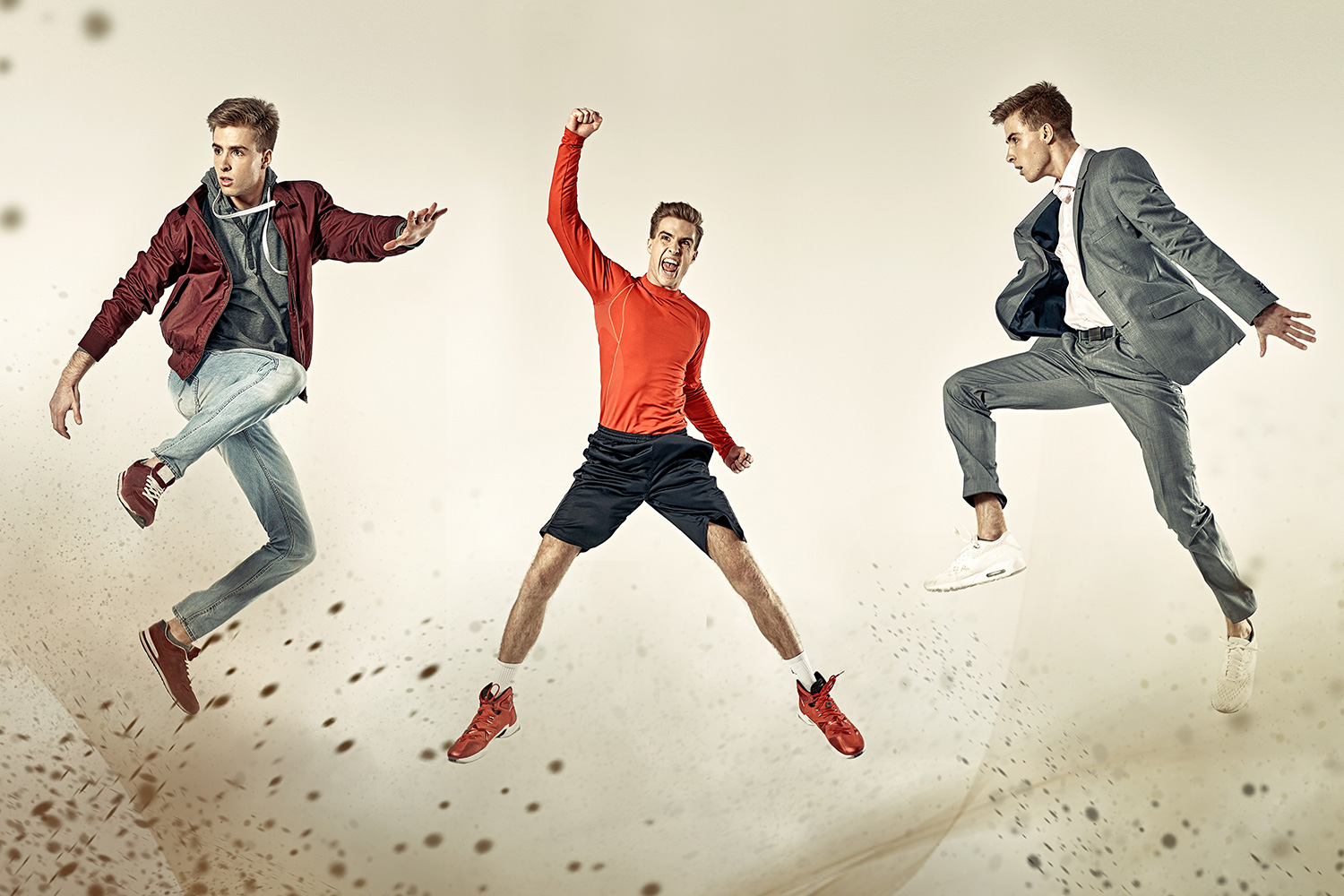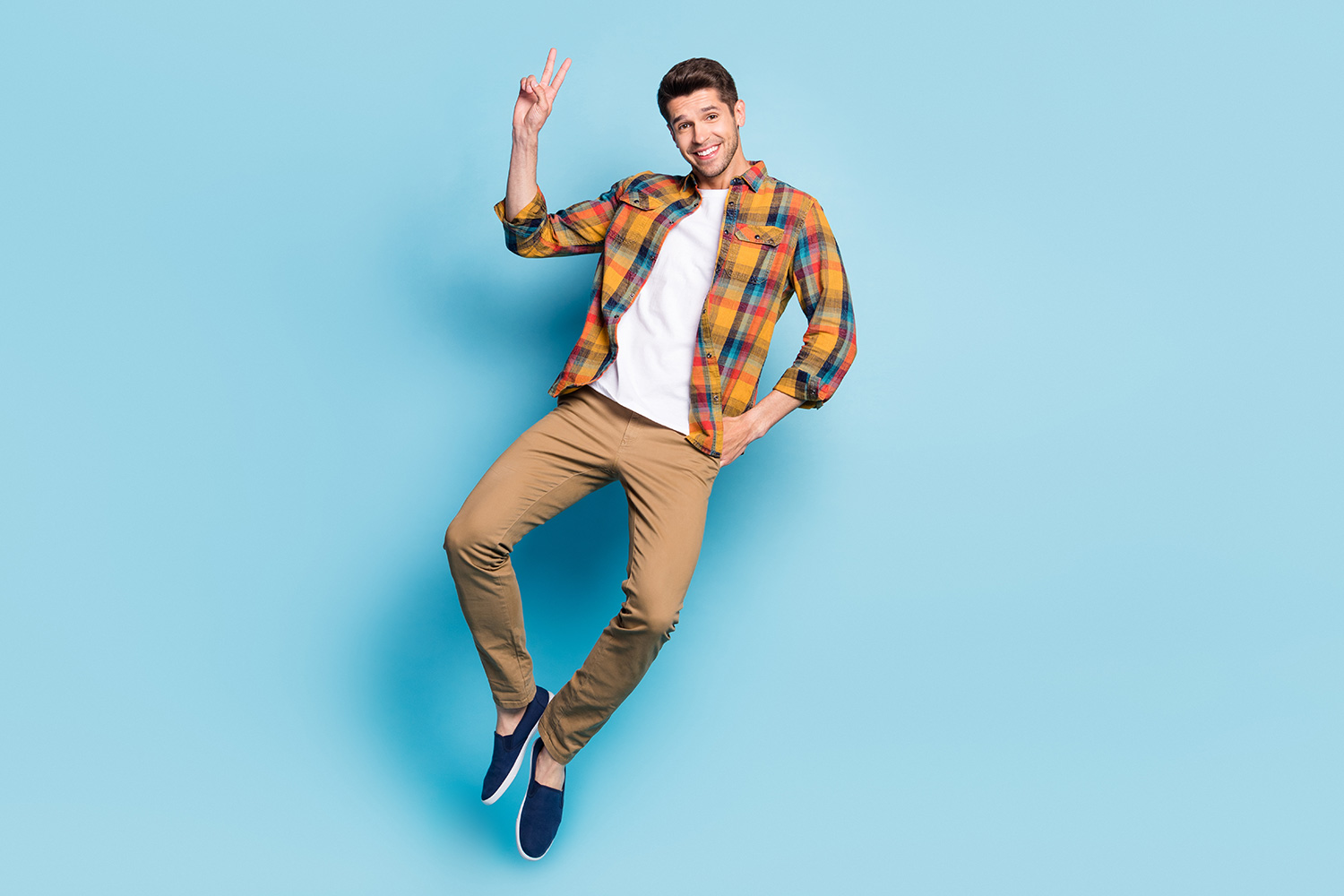Table of contents
Colors have their own language. Like flowers, men’s fashion is no exception to the basic rules and principles of color codes. For while some colors go together perfectly, others swear violently when mixed.
So unless you want to risk sending the wrong message, it’s a good idea to think carefully about how you match them. Whether it’s shoes, pants, shirts, hats or boxer shorts, I’ll tell you everything you need to know about the right color combinations for men.
All you need to know about love and loathing between colors
Color combinations that have proven their worth in both positive and negative ways. Reliable values to match without reservation, or to avoid like the plague.
Color combinations that work
It’s often said that men’s fashion includes fewer colors and shades than women’s fashion. In my opinion, men’s fashion is more difficult to access.
To convince yourself of this, simply compare the fashion catalogs of recent years, and the availability of all these items in stores near you. Or simply compare the number of men’s and women’s boutiques in your town. Or go to a supermarket and count the number of departments devoted to each of them.
Still, it’s not that hard to match clothing colors with style when you’re a man. And to prove it, I’m going to give you a few color combinations to vary on a daily basis:
- brown goes particularly well with blue (electric like cyan), green (emerald, bottle or almond), and pink (candy and fuchsia);
- gray goes equally well with cool colors (such as blue and green) and warm shades (from pink to red, violet or purple);
- beige goes particularly well with cool and light colors, and perhaps even more so with camel;
- black and white go well with all colors.
- blue goes well with brown, fuchsia, gold, silver or amber.
Color combinations to avoid
These days, certain colors are difficult to match, particularly because of their nuances. Examples include bright orange, red and yellow, violet and brown, or electric blue and cherry red. As for pale shades such as cream and egg yolk, it’s best not to combine them with flashy shades (fluorescent pink, silver grey).
Color combinations to enhance your style
Color matching also depends largely on you and your individuality! Style, personality, mood or skin tone, don’t hesitate to vary your color combinations to suit your everyday life.
Matching colors to physical characteristics
Before you embark on the complete banishment of your mismatched wardrobe, give me the benefit of the doubt and take two minutes to apply the following advice: stand in front of your mirror and ask yourself what you think of the reflection that’s sent back to you. Do you like it? Do you find the man in front of you too tall, not tall enough, short, fat, thin, young, old…? Is his complexion pale or swarthy?
All these questions about your physical characteristics have a bearing on the choice of colors you’ll need to adopt to enhance your everyday appearance. Playing with colors will enable you to highlight what you consider to be your strong points, and vice versa.
Here are a few examples:
- if you think you’re too imposing, or on the contrary enjoy being very slim, opt for cameos. This involves combining gradations of dark colors such as black and gray, which produce a slimming optical effect;
- if you have fair hair and complexion, pastel colors enhanced by a touch of brightness will invigorate your softness.
- for hair ranging from auburn to dark raven black, combine black or white with deep colors like purple, red or blue;
- and if your red hair is more orange than copper, believe me, you don’t have to lock yourself into autumnal colors. On the contrary, dare to play up your uniqueness by using contrasts and flash colors;
- Finally, for darker skin tones, enjoy all the color combinations that will bring out your complexion, choosing mainly extremes such as the timeless black and white.
Combining colors according to your psyche
We’re talking about your preferences in terms of styles and trends, your moods and your personality. Are you shy and reserved, or outgoing and outgoing? It goes without saying that in either case, I can only advise you to respect your character. Bright or daring color combinations will embarrass the most timid. In this case, however, don’t neglect the color combinations that best suit your physical characteristics. Try colors that are less contrasting.
For those with a more assertive personality, be careful not to get too carried away, or you’ll end up overdoing it! As for more neutral personalities, don’t fall into the trap of sober, all-purpose combinations (black and white, blue and brown, charcoal gray and sky blue…). Why not try something a little spicier, by experimenting with original, but not excessive, combinations such as brown and emerald green, or pearl grey and electric blue?

Photo (c) : Shutterstock
Color marriages that last
Some friendships seem destined to last, come what may. And this is indeed the case with colors. Certain eras, cultures and life events have had, and will continue to have, a considerable influence on the way we approach fashion.
Appropriate color combinations for every situation
Men’s fashion is not only a reflection of an individual’s personality, it’s also a reminder of the beliefs in which our society has brought us up. Depending on life’s key moments and events, clothing style is bound to change. To put it more concretely, we all feel morally obliged to adopt certain color codes when it comes to dress, codes that vary according to the situation.
For example, when celebrating a union or a birth – wedding, civil union, christening – it’s generally not advisable to dress in light tones, as these are reserved for the main participants in the celebration. Instead, cheerful color combinations with floral motifs, sequins and flashy accessories are preferred. For funerals, on the other hand, dark, low-contrast, all-purpose colors are preferred.

Photo (c) : Shutterstock
Cultural clothing colors
Matching colors is also a question of culture. Traditions, moral or religious beliefs, the symbolism of colors differs greatly from one country to another. If you’re invited to an Indian wedding, for example, you’ll quickly realize that sober colors like gray, black and brown are not culturally accepted.
Conversely, Hindu funerals are celebrated in white. The color schemes that work well in the USA are not the same as in Japan, Sweden, Romania, or even our close Italian neighbors.
Color combinations according to fashion and trends
Antiquity, the Middle Ages and modern times also had their share of dress code precepts! Since warm and cold colors were not classified in the same way as today, red and green could go together throughout the High Middle Ages, with no one objecting. What’s more, not everyone had a choice of colors.
Until recently, the main purpose of color in clothing was to mark differences in gender and social rank. And while this principle continues to apply in some parts of the world, it seems to have been wiped out in France in the mid-twentieth century. Since then, fashions and trends have been rebellious, liberating and borderless:
- 60s: raw denim, faded denim jackets, black leather perfecto jackets and striped or colorful checked shirts;
- 70s: floral motifs and psychedelic prints, multicolored elephant-leg pants and flashy jumpsuits;
- 80s: black bomber jackets, plain tights in deep colors (cherry red, electric blue, chick yellow), and loose-fitting plaid shirts;
- 90s: suits and overalls in metallic and futuristic colors, jeans and dungarees in raw and faded blue;
- 2000s: camouflage, leather and rhinestone ensembles, and fluorescent suits;
- 2010s: light colors for a casual style, and a strong attraction to all shades and forms of pink;
- 2020s: revival and blending of previous fashions and trends.
- 2023: We’re not there yet!
